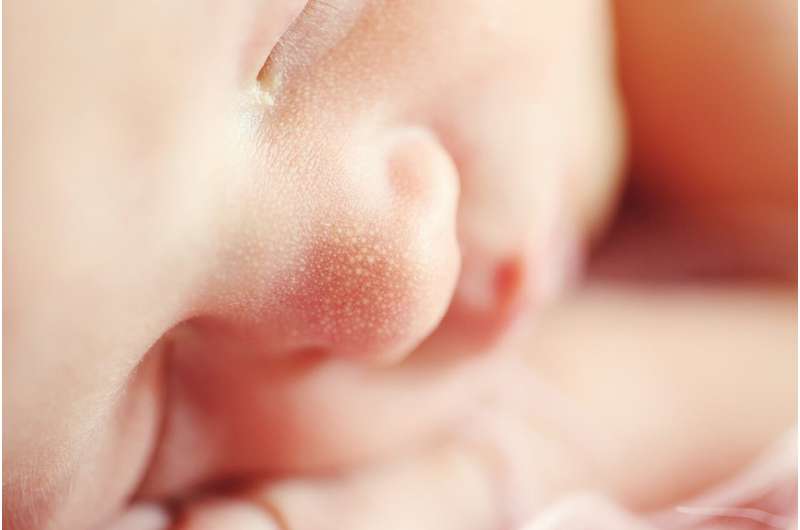Helping preterm babies breathe

It's that sound we hear when healthy babies are born, just seconds after delivery—a gasp of air, perhaps even a cry, as a newborn inflates its lungs for the very first time.
But for babies born premature, they face a higher risk for one or more health complications after delivery. One of the main concerns is the newborn's lung health. To that end, Dr. Hossein Tavana, associate professor of biomedical engineering at The University of Akron, has been awarded a grant of $230,000 from the National Science Foundation (NSF) to study one of the most common treatment methods used to develop the lungs of premature babies.
A preterm baby's lungs do not produce sufficient amounts of a natural, liquid substance called surfactant that keeps the tiny air sacs (alveoli) in the lungs open. That's because the lungs do not usually begin producing surfactant until about the 30th week of pregnancy. As a result, a preterm baby often has difficulty expanding their lungs, taking in oxygen and getting rid of carbon dioxide. Babies born without enough surfactant are said to have respiratory distress syndrome or RDS.
Traditionally, these babies receive surfactant replacement therapy. Current methods of this therapy involve instilling a solution into their windpipe before using airflow from a ventilator to direct the solution into the lung airways.
To help improve the replacement therapy, Tavana's lab will use the NSF grant money to study the delivery and distribution of surfactant in the lungs of premature babies. He and his team have developed a one-of-a-kind approach to computationally design a 3-D model of lung airways and fabricate it using an advanced manufacturing technology.
"The success of this RDS treatment heavily depends on the uniformity of distribution of the surfactant solution in airways," Tavana says. "However, evidence from X-ray imaging shows non-uniform distribution, leading to a poor response to the treatment."
For researchers, it has been challenging to improve the surfactant replacement therapy due to the inaccessibility of airways. By generating the 3-D physical models of airways to aid in visualizing surfactant flow in airways, Tavana will be able to better understand the fluid dynamics of surfactant.
The success of Tavana's research will ultimately lead to better design strategies for surfactant replacement therapy for babies that have RDS.


















